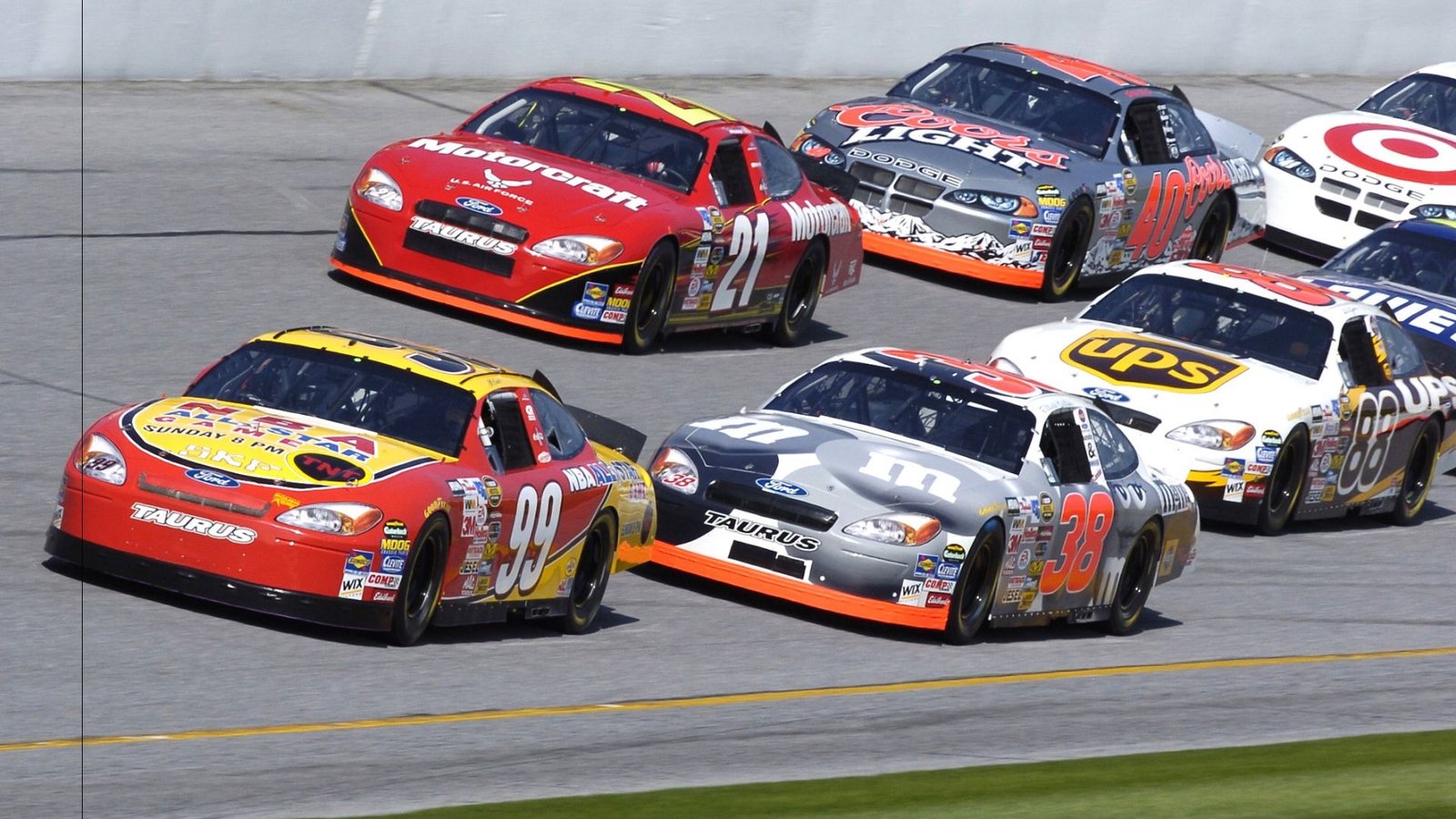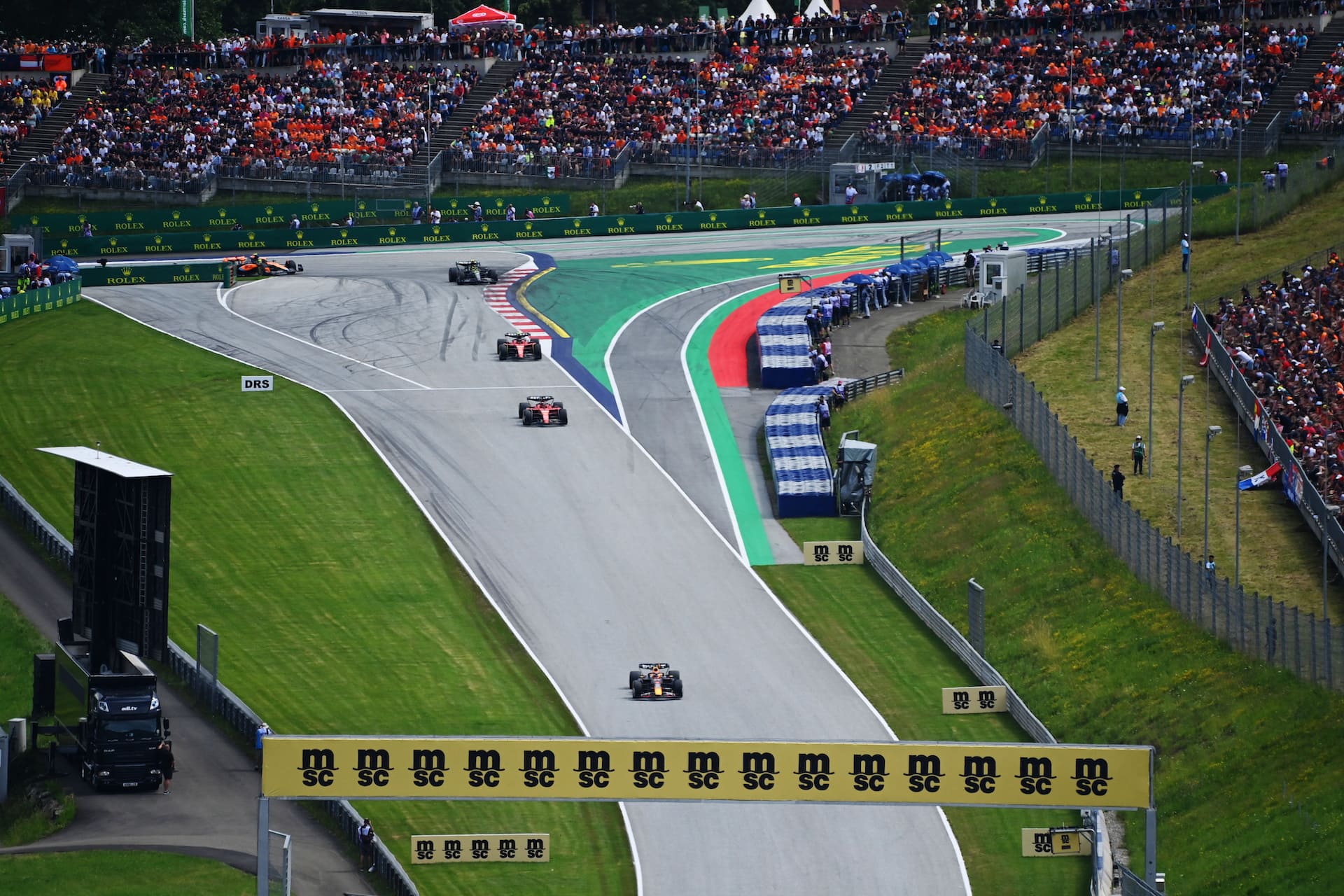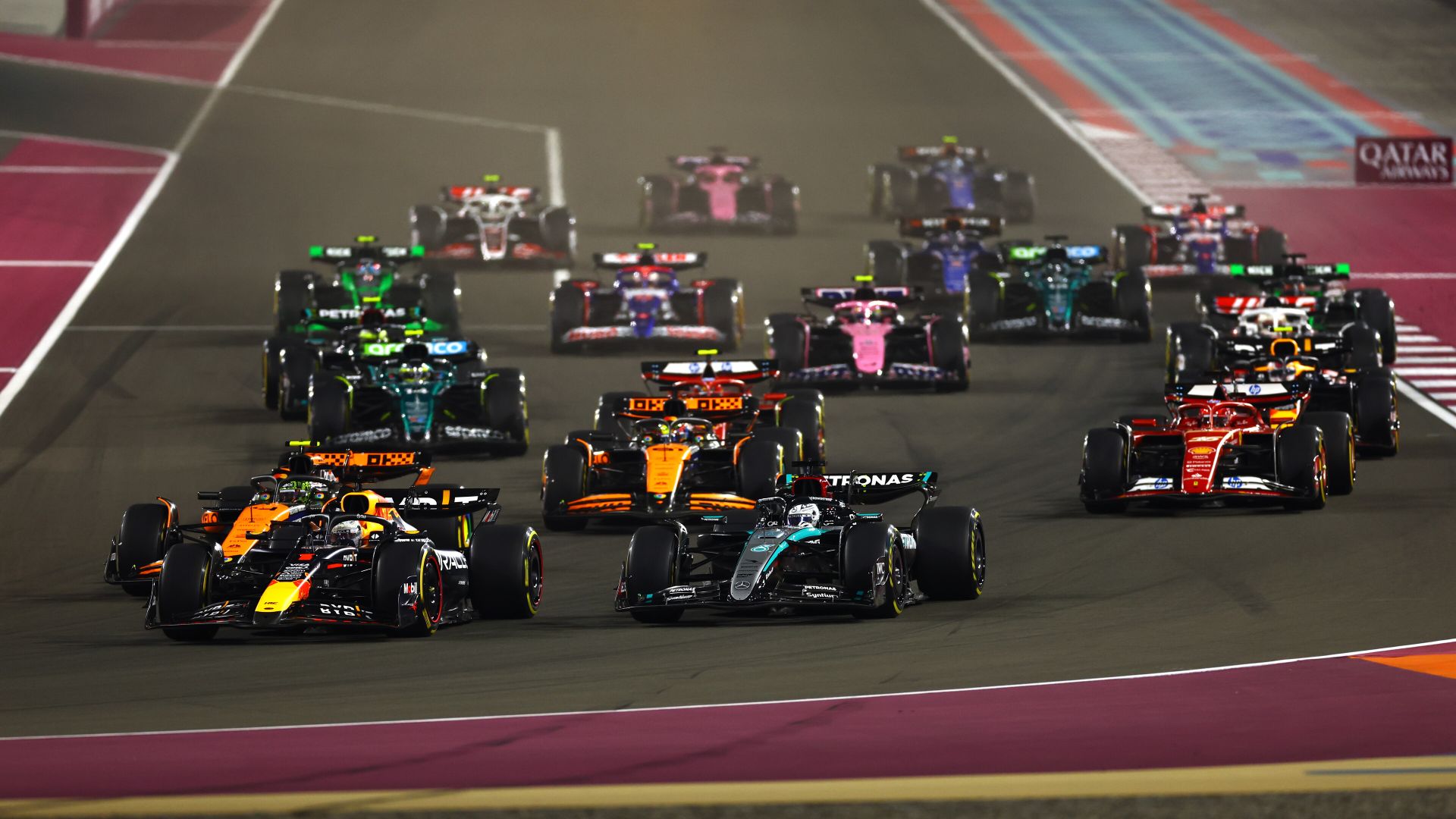How Many Laps In An F1 Race - The Grand Prix Distance
Have you ever sat down to watch a Formula 1 race, perhaps with a cool drink in hand, and found yourself wondering just how many times those amazing cars will circle the track? It's a pretty common thought, actually. You see the drivers going at incredible speeds, and it's easy to get caught up in the excitement, but the exact number of trips around the circuit can feel a bit like a mystery to folks watching at home.
The truth is, there isn't one single, set answer for every race on the calendar. It’s not like every Grand Prix, no matter where it is held in the world, asks the drivers to complete the same fixed number of circuits. Instead, the total number of laps for any given event changes from one track to another, which, you know, makes sense when you think about it for a moment.
This variation in lap count depends on a few different things, really, and understanding these elements helps you get a better grip on how a race unfolds. We're going to take a closer look at what goes into figuring out that final lap number, giving you a clearer picture of what the teams and drivers are aiming for as they speed around the circuit. It's all part of the grand plan for these thrilling competitions.
Table of Contents
- What Determines How Many Laps in an F1 Race?
- How Does Track Length Affect How Many Laps in an F1 Race?
- The Role of Time Limits - How Many Laps in an F1 Race Can Be Completed?
- Are There Special Cases for How Many Laps in an F1 Race?
- A Look at Some Races - How Many Laps in an F1 Race at Famous Circuits?
- The Strategy Behind the Laps - How Many Laps in an F1 Race Influence Teams?
- Safety Car and Red Flags - Changing How Many Laps in an F1 Race
- The Finish Line - Knowing When How Many Laps in an F1 Race Are Done
What Determines How Many Laps in an F1 Race?
Figuring out the exact number of trips around the track for a Formula 1 Grand Prix really comes down to a couple of key things. The main idea, the big picture, is that a Grand Prix race needs to cover a certain amount of ground, a specific distance, to be considered a proper competition. This distance is set at a little over 305 kilometers, which is roughly 190 miles, so it's a good stretch. That's the target, the length of the contest, and the lap count is then worked out from there, you know, to make sure they hit that mark.
So, the rules say that a Grand Prix must run for at least 305 kilometers. The only real exception to this general rule is the Monaco Grand Prix, which has a slightly shorter distance because of its unique, twisty layout. Every other race on the schedule aims for that 305-kilometer mark, give or take a little bit. This means the number of times the cars go around the track is directly linked to how long each individual lap happens to be. It's a pretty straightforward calculation, actually, once you know the track's full circuit length.
The organizers and the sport's governing body decide on the number of laps needed to get as close as possible to that 305-kilometer total without going under it. For instance, if a track is very long, the cars won't need to complete as many circuits to reach the required distance. If a track is shorter, they'll need to go around a greater number of times. It’s all about hitting that specific mileage, which, you know, makes for a proper test of endurance and speed for the teams and their machines.
How Does Track Length Affect How Many Laps in an F1 Race?
The physical size of the circuit, the actual measurement of one full trip around it, plays a very big part in deciding how many laps in an F1 race will be run. Think about it this way: if you have a really long path to cover, you don't need to make as many trips along it to reach your goal. But if the path is quite short, you'll have to go back and forth many more times to get to the same overall distance. It's a simple idea, really, but it's central to how race distances are set up.
Consider a track like Spa-Francorchamps in Belgium, which is known for being one of the longest circuits on the calendar. Because each individual lap there covers a significant amount of ground, the drivers will complete fewer laps to hit that 305-kilometer target. On the other hand, a circuit like the Hungaroring in Hungary, which is much shorter in its overall length, will require the cars to go around a much greater number of times to make sure they cover the necessary distance. So, the size of the loop directly influences the count of loops, you see.
This difference in track dimensions means that watching a race at a shorter circuit often feels like there's more action packed into each moment, simply because the cars are coming around to the start/finish line more frequently. A longer track might mean fewer passes over that line, but each lap still feels like a big journey. It's all part of what makes each Grand Prix feel a little bit different, even though the overall aim, that 305-kilometer mark, stays pretty much the same for most events, so it's interesting to observe.
The Role of Time Limits - How Many Laps in an F1 Race Can Be Completed?
Beyond just the distance, there's another very important factor that can put a cap on how many laps in an F1 race actually get completed: time. Even if the cars haven't quite reached that 305-kilometer mark, the race simply cannot go on forever. There are strict time limits in place to make sure events don't drag on for an unreasonable amount of time, which, you know, is pretty sensible for everyone involved, from the drivers to the fans watching.
Generally, a Grand Prix has a maximum duration of two hours from the moment the lights go out at the start. If the leading car reaches the 305-kilometer distance before this two-hour mark, then the race ends when that car crosses the finish line. However, if two hours pass and the leader hasn't yet covered the full distance, the race will finish at the end of the lap that is currently underway once that two-hour timer runs out. This means the total number of laps completed might be less than originally planned, which can be a bit of a surprise sometimes.
There's also a broader time limit of three hours for the entire event, which includes any stoppages or delays, like those caused by a safety car period or a red flag. If the race gets stopped and restarted a few times, or if there are long periods where the safety car is out, this three-hour overall limit can become quite relevant. If the three hours are up, the race is called, no matter how many laps in an F1 race have been completed or how far the cars have gone. This rule ensures that even the most chaotic races eventually come to a close, so it's a good way to manage things.
Are There Special Cases for How Many Laps in an F1 Race?
While the general rules for how many laps in an F1 race are pretty consistent, there are, as you might expect, a few unique situations that don't quite fit the standard mold. These special cases often come about because of the distinct characteristics of certain tracks or newer additions to the racing calendar. It's always interesting to see how the sport adapts its rules for these particular circumstances, isn't it?
The most famous exception, as we touched on earlier, is the Monaco Grand Prix. Because of the very tight, slow, and twisty nature of the street circuit in Monte Carlo, it's considered too difficult and potentially too long to complete the full 305 kilometers within the usual time limits. So, for Monaco, the race distance is set at 260 kilometers (about 161 miles), which means fewer laps are needed compared to other circuits of a similar length. It’s a very specific arrangement for a very special race, which, you know, makes it stand out.
Another relatively new kind of special case involves the Sprint races that have been introduced in recent seasons. These are shorter events held on some Grand Prix weekends, usually on a Saturday, and they have their own distinct rules for how many laps in an F1 race are run. Sprint races are much shorter than the main Grand Prix, typically covering about 100 kilometers (around 62 miles). This means a much lower lap count, designed to be a quick burst of action rather than a long endurance challenge. They are, in a way, a different kind of racing spectacle altogether.
A Look at Some Races - How Many Laps in an F1 Race at Famous Circuits?
To give you a clearer picture of how these rules play out, let's consider some well-known tracks and the typical number of laps you'd expect to see there. It helps to put the theory into practice, really, and shows how the track's specific layout directly influences the race length. Knowing these figures can make watching the Grand Prix a little more engaging, too, as you'll have a better idea of what to expect.
Take the Bahrain International Circuit, for example, which often hosts the first race of the season. It's a pretty standard length track, and a Grand Prix there usually involves 57 laps to cover the required distance. Compare that to the Autodromo Nazionale Monza in Italy, known for its incredibly high speeds and long straights. Despite feeling very fast, its overall length means a typical race there is completed in 53 laps. So, even with different characteristics, they both aim for that general distance, you see.
Then there's the Silverstone Circuit in Great Britain, a classic track with a mix of fast corners and straights. A Grand Prix at Silverstone typically sees the cars complete 52 laps. And if we look at the Suzuka International Racing Course in Japan, famous for its challenging "S" curves, the race usually runs for 53 laps. These examples really show how the unique dimensions of each circuit lead to a different number of trips around the track, all while aiming for that consistent overall race distance, which is quite clever.
The Strategy Behind the Laps - How Many Laps in an F1 Race Influence Teams?
The number of laps in an F1 race is not just a simple count; it's a very big part of how teams plan their entire approach to the competition. Every single trip around the track, every lap, uses up fuel, wears down the tires, and puts strain on the car's various parts. So, knowing the total number of laps well in advance allows teams to work out their pit stop timings, how many sets of tires they'll need, and even how much fuel they'll start with. It's a complex puzzle, really, and the lap count is a key piece.
For instance, if a race has a lot of laps, teams might plan for more pit stops to change tires, as the rubber will wear out more quickly over the extended distance. They also need to think about fuel consumption over that greater number of trips. A shorter race, on the other hand, might allow teams to try a strategy with fewer stops, or perhaps even just one, pushing the tires a bit harder for longer. It's all about balancing speed with the need to make the equipment last for the whole duration, which is a constant challenge.
Drivers also adjust their driving style based on the lap count. In a very long race, they might conserve their tires more in the early stages, knowing they have many more laps to go. In a shorter sprint, they might be able to push harder from the very beginning, knowing the finish line will come up much sooner. This strategic element, tied directly to how many laps in an F1 race are planned, adds a deep layer of thought to every Grand Prix, making it more than just a simple speed contest, so it's quite fascinating.
Safety Car and Red Flags - Changing How Many Laps in an F1 Race
Even with all the careful planning, the actual number of laps completed in an F1 race can sometimes change during the event itself, usually because of unexpected situations on the track. Things like accidents, debris on the circuit, or very bad weather can lead to periods where the race is slowed down or even stopped entirely. These interruptions have a very direct impact on how the race unfolds and, ultimately, how many laps in an F1 race are actually run before the chequered flag falls.
When a safety car is deployed, for example, the cars have to slow down and follow a special vehicle, which bunches them up. During these periods, the laps still count towards the total, but the cars are traveling at a much reduced speed. This means it takes longer to complete each lap, and the overall time limit for the race becomes a much bigger factor. If there are many safety car periods, the race might hit its two-hour time limit before the planned number of laps has been completed, leading to an early finish in terms of distance, you know.
A red flag, which means the race is completely stopped, has an even bigger effect. When a red flag comes out, the race clock also stops, and the cars return to the pit lane. Once the issue on track is sorted, the race can be restarted. While the clock stops during a red flag, the total race time limit of three hours still applies to the entire event, including all stoppages. So, if there are long red flag periods, the race might still be called after three hours from its original start time, regardless of how many laps in an F1 race were planned or how much distance has been covered. It's a very dramatic way for things to change.
The Finish Line - Knowing When How Many Laps in an F1 Race Are Done
So, after all the fast driving, the strategic pit stops, and any unexpected interruptions, how do we actually know when the race is over? It's a very simple signal, really, but it marks the moment when all the effort and planning come to their conclusion. The finish line is crossed, and the winner is declared, bringing the Grand Prix to its exciting end, which is always a moment of high tension and excitement for the fans.
The race officially ends when the leading car completes the final scheduled lap and crosses the finish line. At that precise moment, the famous chequered flag is waved. This flag is the universal signal in motorsport that the race is done. Once the leader has crossed, all other cars still on the track are also considered to have finished the race, regardless of whether they complete their own final lap or not. They simply continue to drive until they, too, cross the finish line, often a lap or more behind the winner.
Even if the race is cut short due to a time limit or a red flag, the same principle applies. The race finishes when the leading car crosses the finish line after the time limit is reached, or after a specific signal from race control in the case of a red flag. The chequered flag will still be waved for the leader. This clear signal ensures there's no confusion about when the contest is truly complete, making it a very definitive end to how many laps in an F1 race were needed for that day's competition.

How Many Laps Are There in a NASCAR Race? - Sometimes Interesting

How many laps does each Formula 1 race have?

How Many Laps In A Formula 1 Race? | F1 News